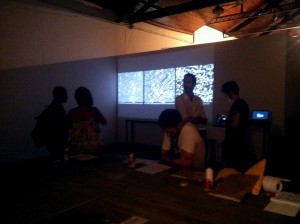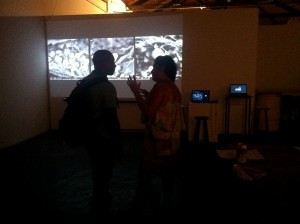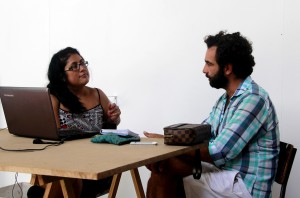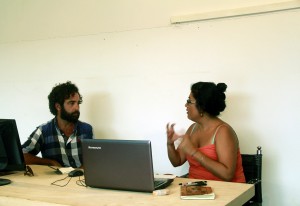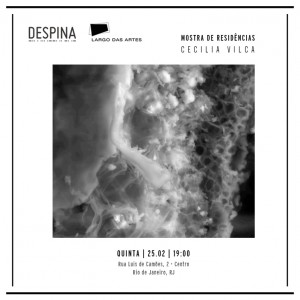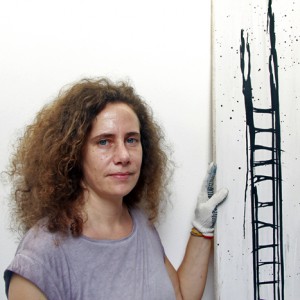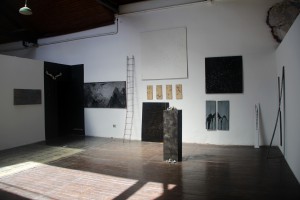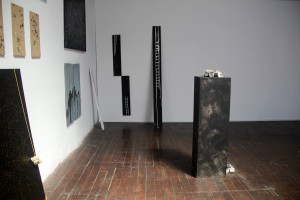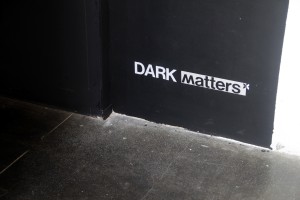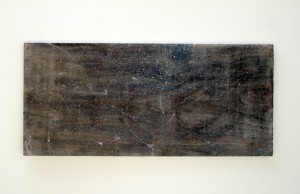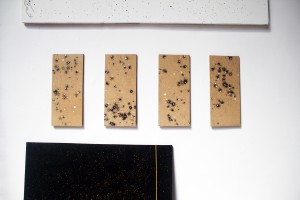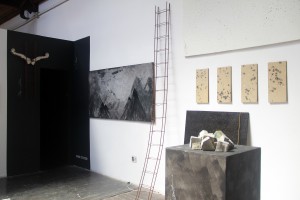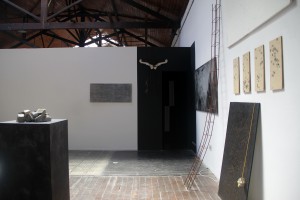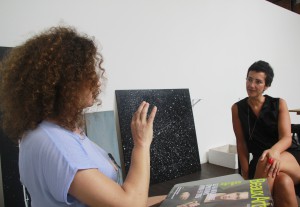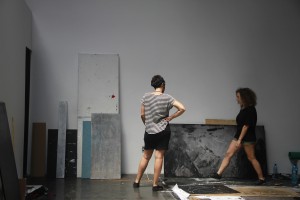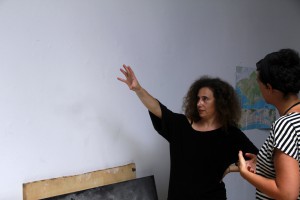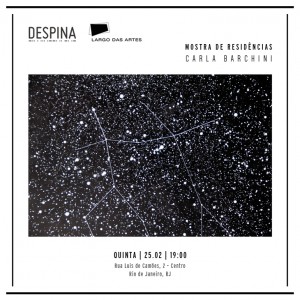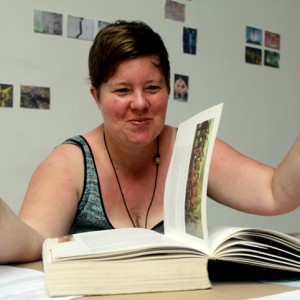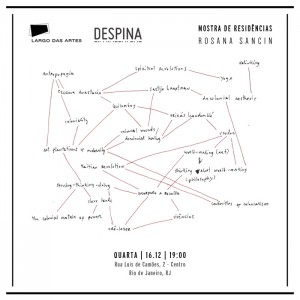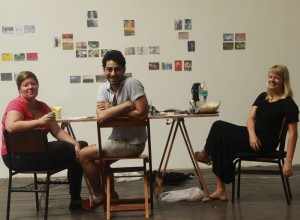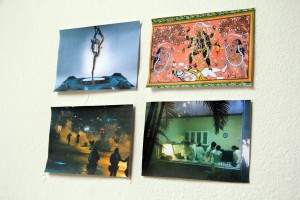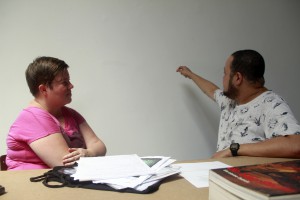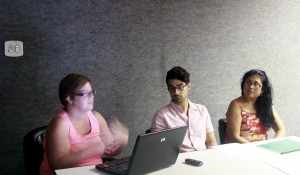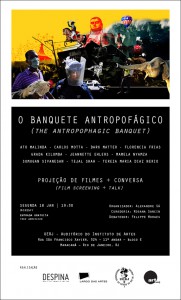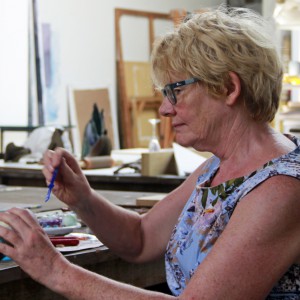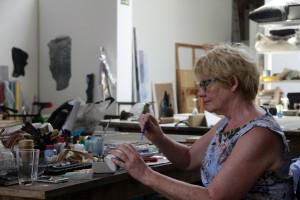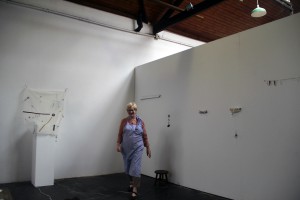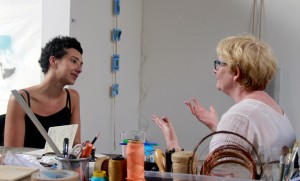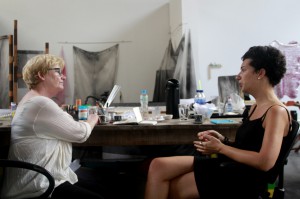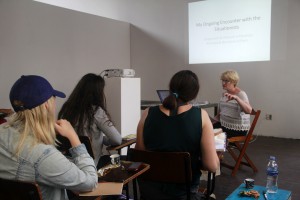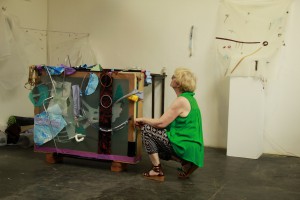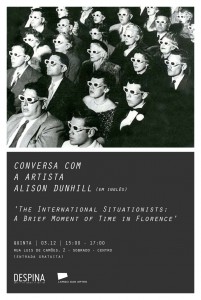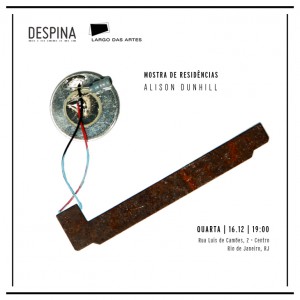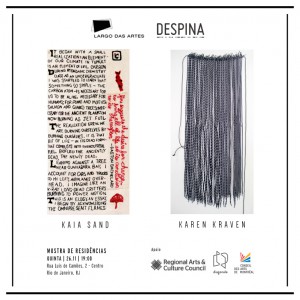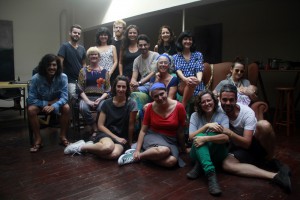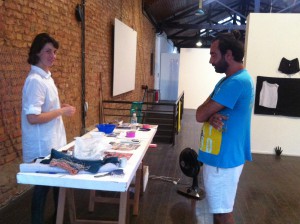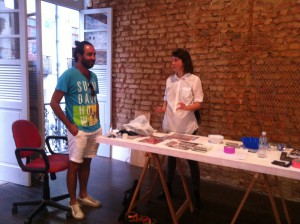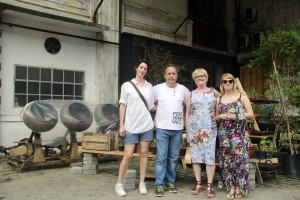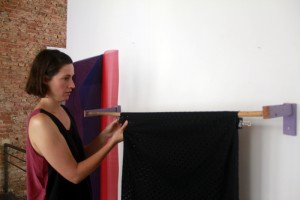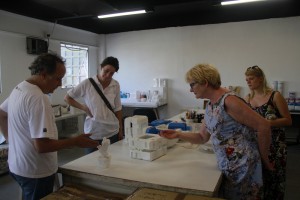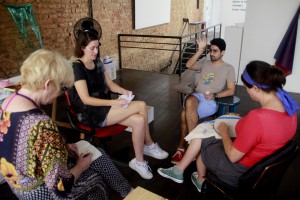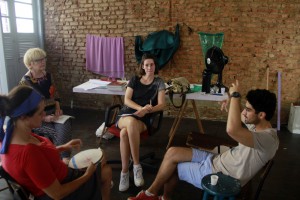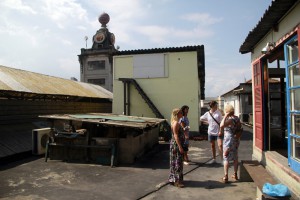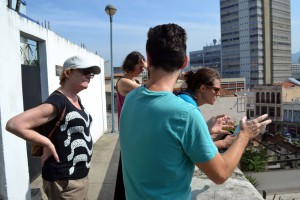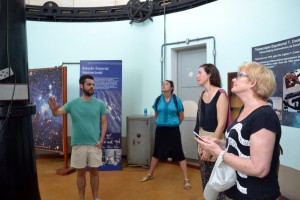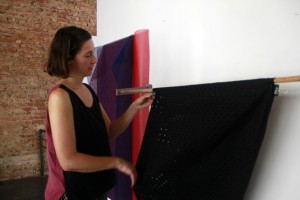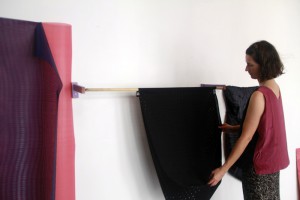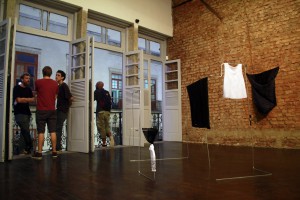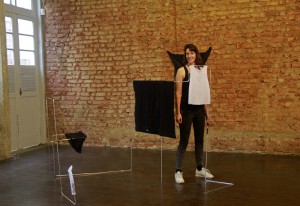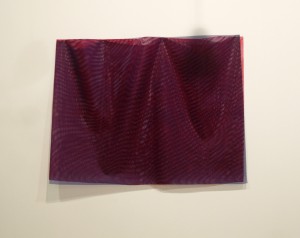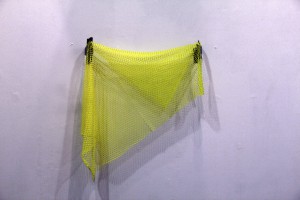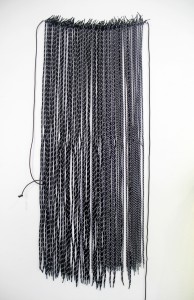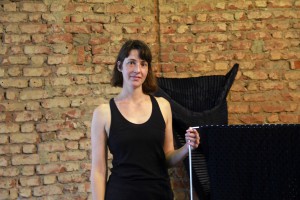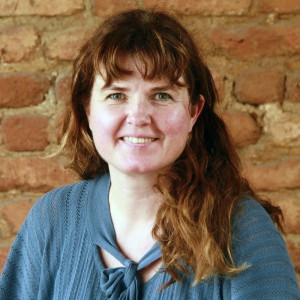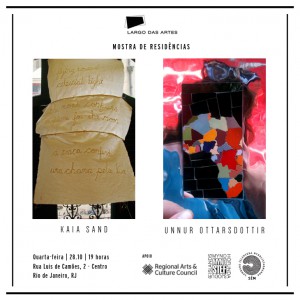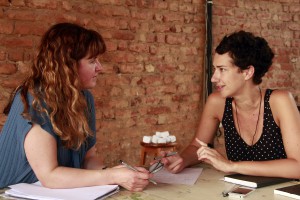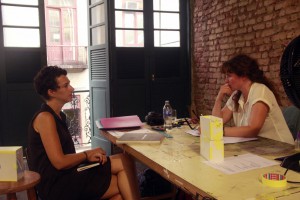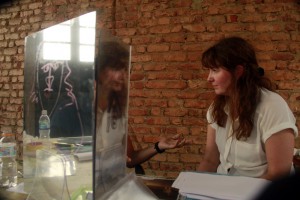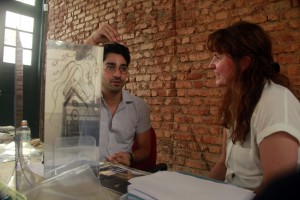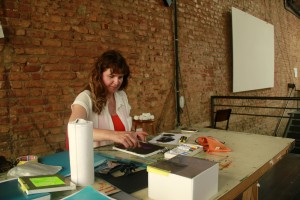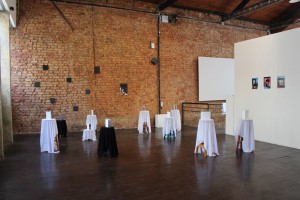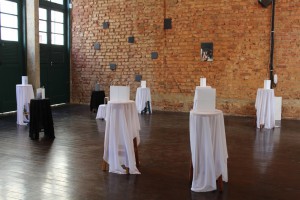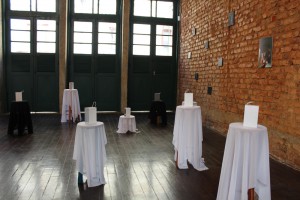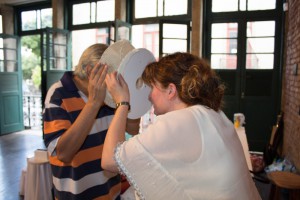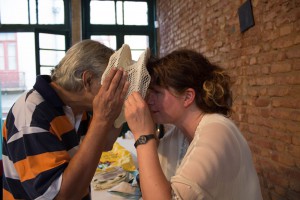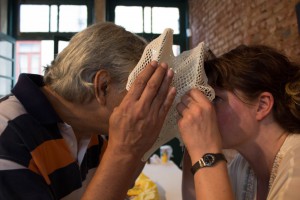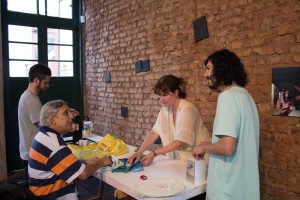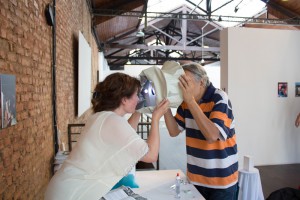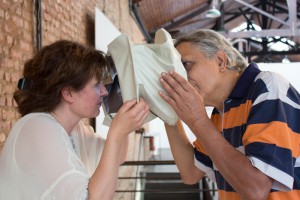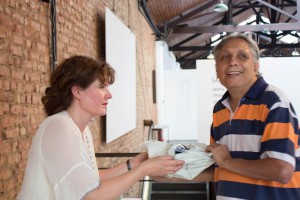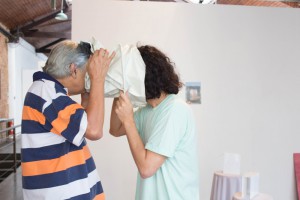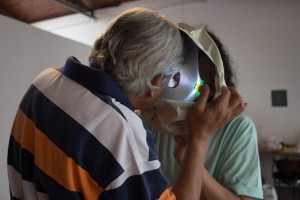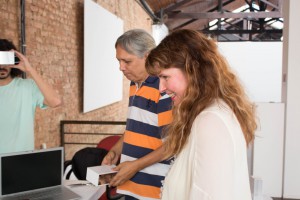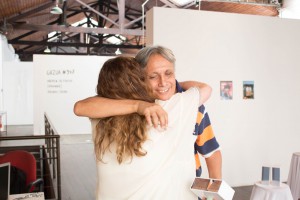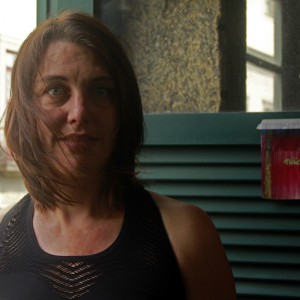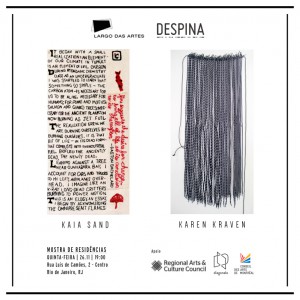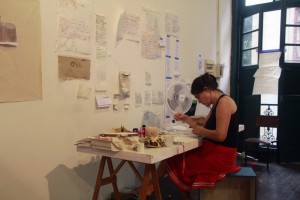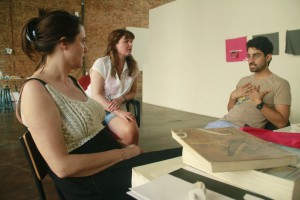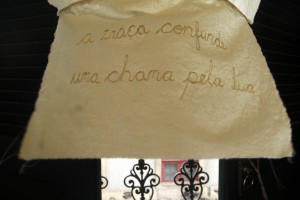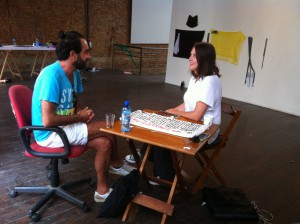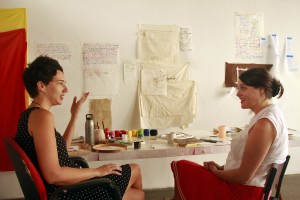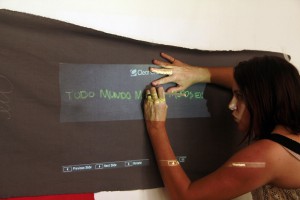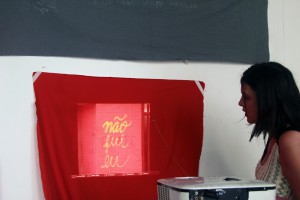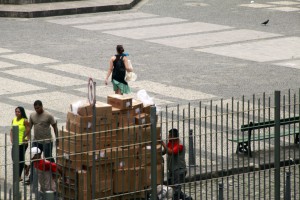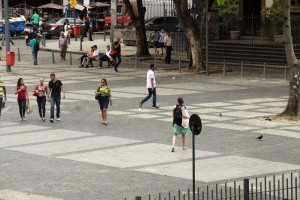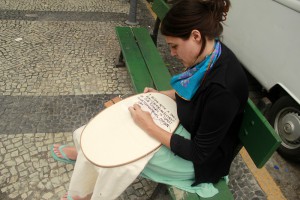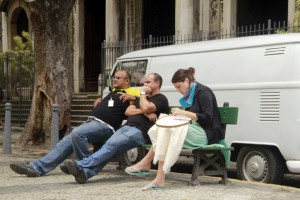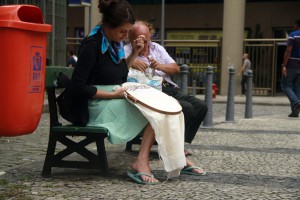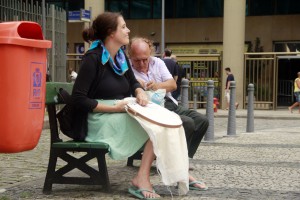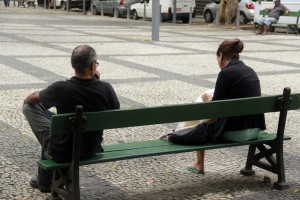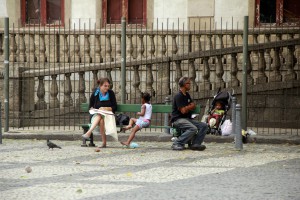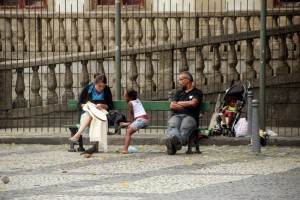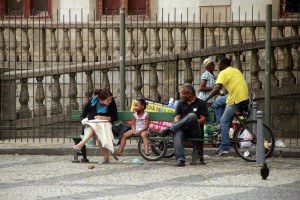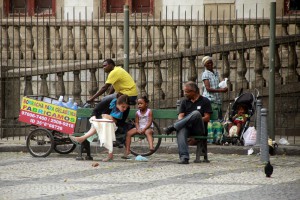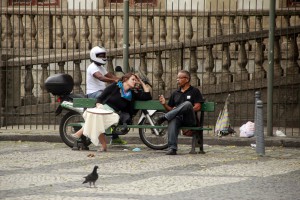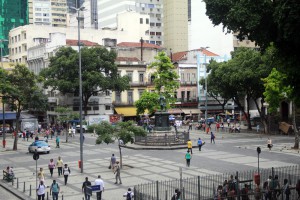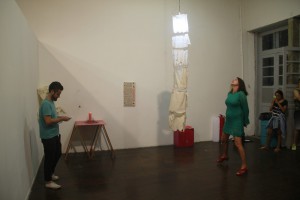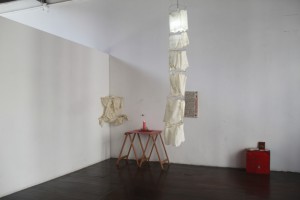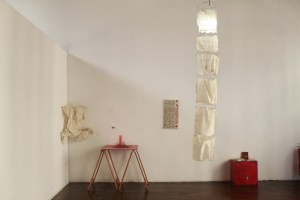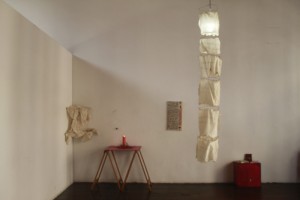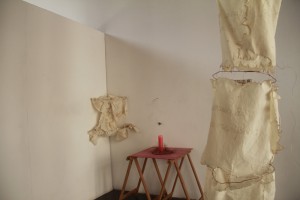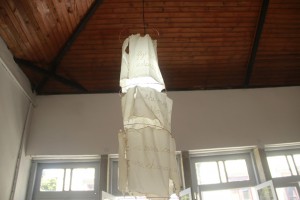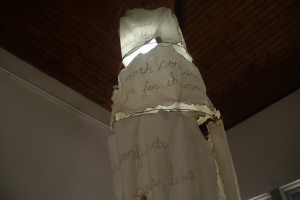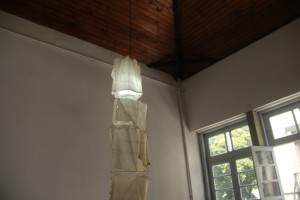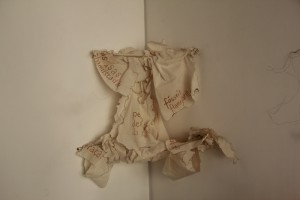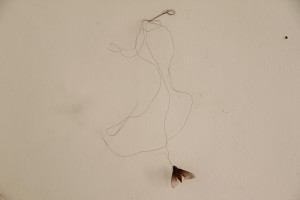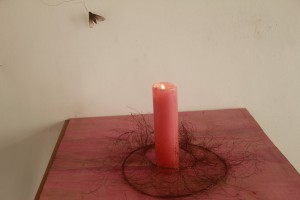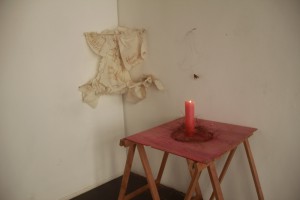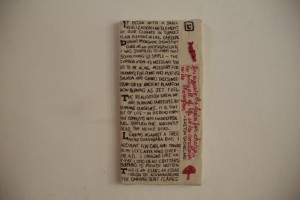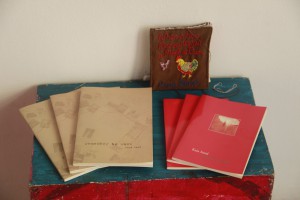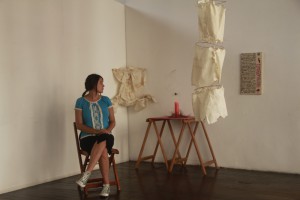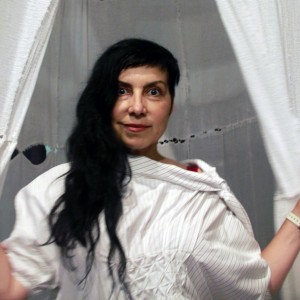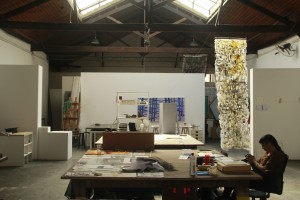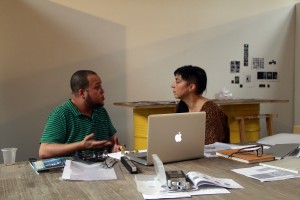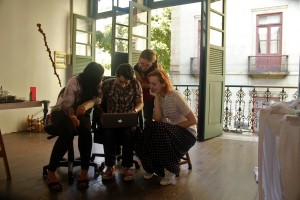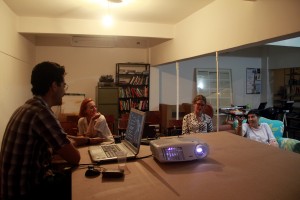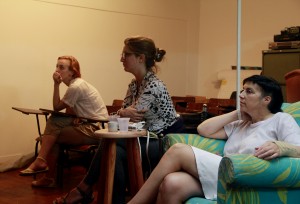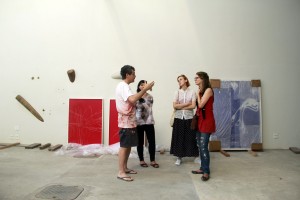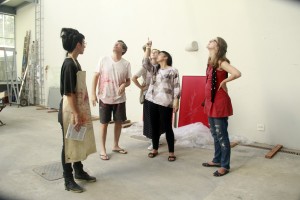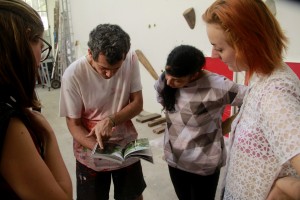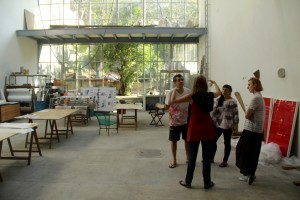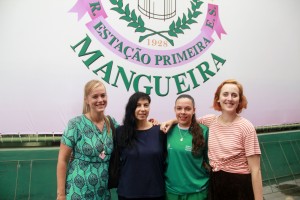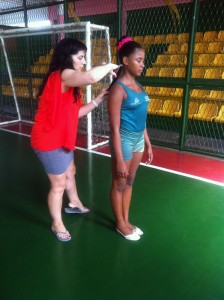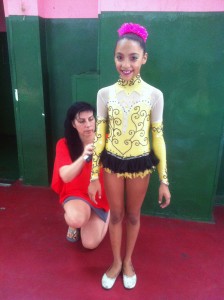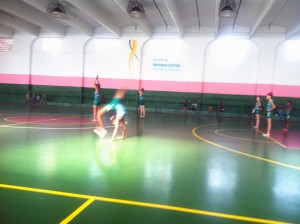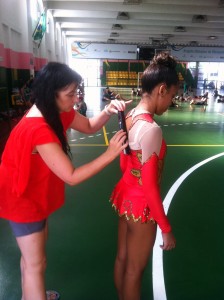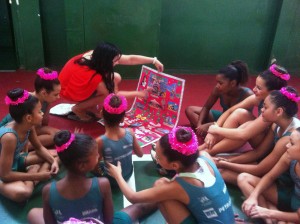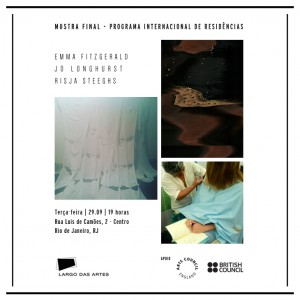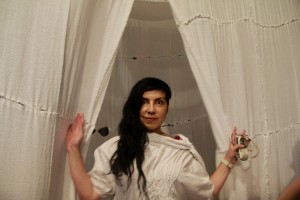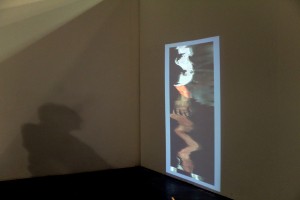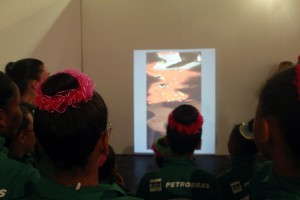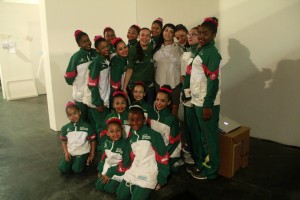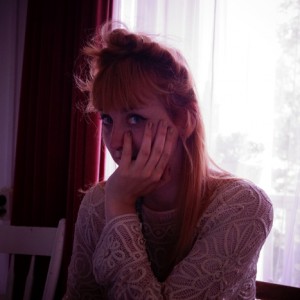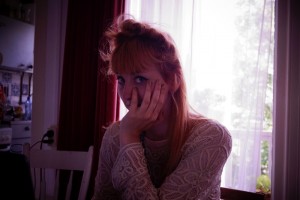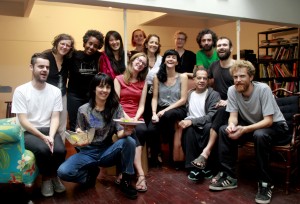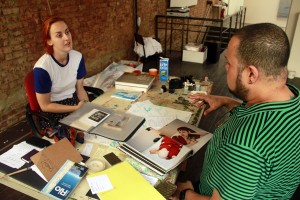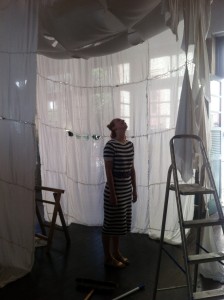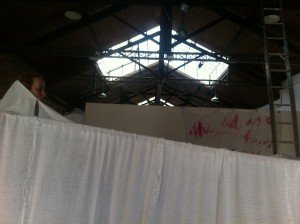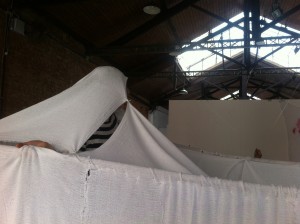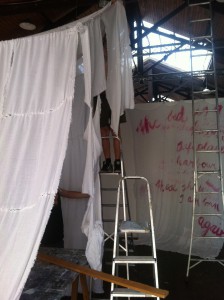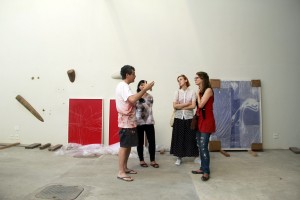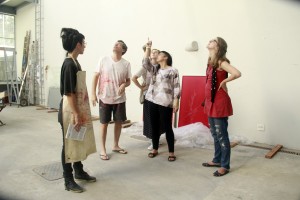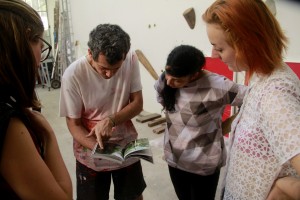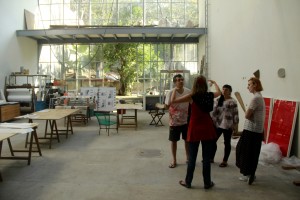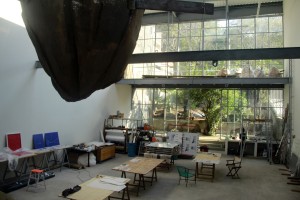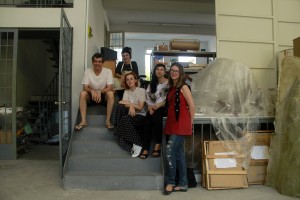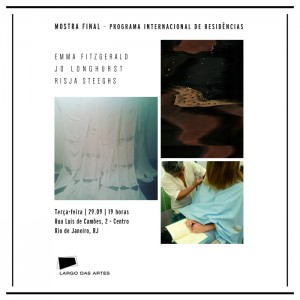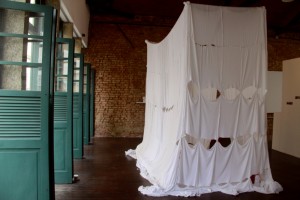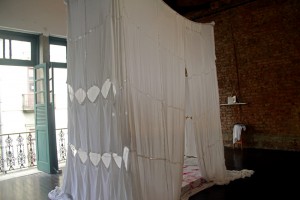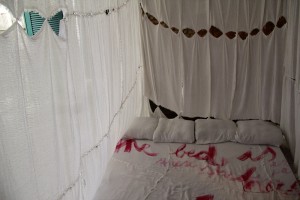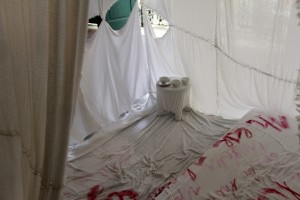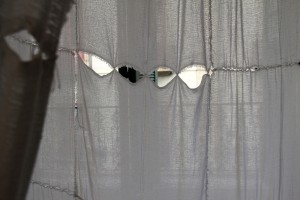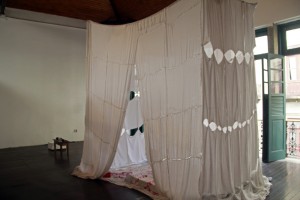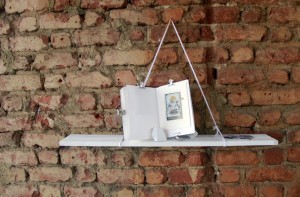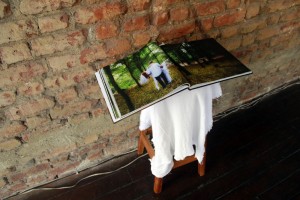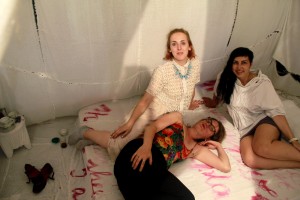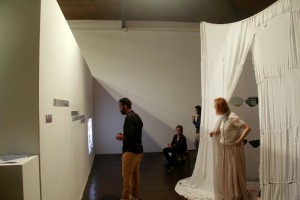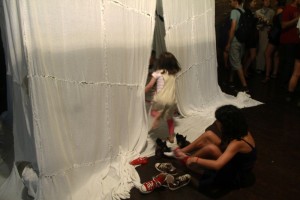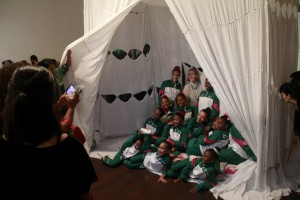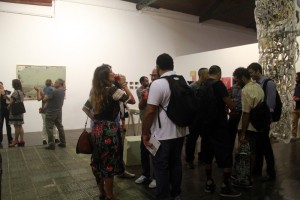Kaia Sand vive e trabalha em Portland, Oregon. Atualmente leciona na Portland State University Honors College, onde também é uma poeta-residente. Sua prática artística está concentrada na poesia documental e investigativa, revelada de forma física e experiencial por meio de caminhadas, bordados ou marteladas em superfícies de metal. Kaia é autora dos livros “Interval” (Edge Books), “Remember to Wave” (Tinfish Press) e “A Tale of Magicians Who Puffed Money that Lost Its Puff” (Tinfish Press).
Com um interesse em questões que lidam com a impermanência e a instabilidade do espaço público, Kaia já desenvolveu projetos de sinalização poética, bem como uma serie de passeios performativos e participativos. Também é co-autora do livro “Landsapes of Dissent: Guerrilla Poetry and Public Space”. Com o intuito de aprofundar a sua investigação poética sobre a crise financeira global, foi curadora dos encontros “Econ Salon”, que reuniram artistas, economistas e ativistas de direitos de moradia. Na ocasião, produziu um poema-bordado de mais de dois metros de comprimento e também criou um show de mágica. Mais recentemente, ela participou de uma residência com a artista Garrick Imatani, na City of Portland Archives and Records Center. Esta experiência teve como principal objeto de pesquisa a vigilância policial em torno dos ativistas políticos. Questões como anonimato e exposição pública foram exploradas e alguns trabalhos desenvolvidos, entre eles, um tríptico de bordados e uma serie de cartões de cobre marcados com inscrições provenientes dos arquivos dos movimentos de direitos das mulheres (“She Had Her Own Reason for Participating”). Além disso, entrevistou ativistas perseguidos, o que originou uma serie de poemas colaborativos (“So He Raised His Hand”).
Para a sua residência de dois meses, que contou com o financiamento do Regional Arts and Culture Council, Kaia investigou a decadência corporal, o fogo e o poder, decorrentes da sua pesquisa sobre o aquecimento global e os meios cada vez mais desregrados de extração do petróleo. Trabalhando com tecidos produzidos no Brasil – algodão e juta – ela estendeu a sua exploração da relação texto-têxtil, a escrita pelo bordar – apoiando-se, aqui, no emprego do fogo. Também produziu uma serie de desenhos a partir de uma gama de influências locais, que passam pelos artistas José Leonilson e Arthur Bispo do Rosário, e também pela literatura de cordel e pixação urbana.
Mais informações: http://kaiasand.net/
Texto curatorial I
por Michelle Sommer
A artista americana Kaia Sand concentra sua prática artística na poesia documental e investigativa. A profusão de escrituras urbanas que emerge na selva carioca associa-se ao gênero popular da literatura de cordel e, em conjunto, inspiram Kaia a construir linguagens poéticas em superficies distintas (assim como são as texturas da cidade). Como ler e reescrever a linguagem do amor e/ou as reinvindicações políticas ativistas de causas distintas que povoam os planos-muros do Rio de Janeiro e clamam por justiça social? Enquanto anônimos poetas urbanos seguem a contínua ação de produção de subjetividades dissidentes – em seu amplo espectro de diversidade – a artista dedica-se aos estudos de reconhecimento de tipologias de linguagem. Nesse processo de alfabetização perceptiva da poesia urbana, Kaira busca o hífen que liga texto-têxtil da escrita pelo bordar.
Texto curatorial II
por Bernardo José de Souza
A poesia de Kaia Sand emerge de um espaço ambivalente, de uma zona tão política quanto lírica, a um só tempo pública e privada. Este intervalo entre a vida interior da poeta e o mundo exterior serve como plataforma para que a artista possa articular sua pesquisa de linguagem, sua deriva estética e intelectual. As imagens que produz subvertem o sentido original da palavra escrita, constroem uma paisagem semântica que alterna volatilidade poética e proposição conceitual; essas imagens servem de combustível para a renovação constante do nexo poético, levando suas possibilidades à exaustão, ao limite da comunicação, para que, então, do nonsense possa emergir uma nova linguagem. Após explorar o interstício entre esfera pública e privada, entre os domínios estéticos e políticos, entre o índice e os fatos, Sand pulveriza o léxico para dar forma a uma nova linguagem, sonora e material, simultaneamente afetiva e mental, real ou imaginária.
Em seu projeto para o Programa de Residências Despina, a artista toma a língua portuguesa para si, incorporando-a à sua escrita como se sua língua materna fosse, embora despreocupada em dominar o idioma por completo, em atribuir sentido estanque a um conjunto de palavras que ganham corpo em sua atual pesquisa sobre o fogo, sobre a combustão tão destrutiva quanto criativa, sobre a flama que arde na fogueira poética e fulmina as bases de uma cultura supostamente universal. Das labaredas verbais, sobram os fósseis de linguagem, palavras dotadas de uma ancestralidade prestes a serem incorporadas ao seu novo repertório poético. Interessada na transformação do mundo e da linguagem, Sand inpira-se nas traças e mariposas para levar adiante sua pesquisa sobre o fogo, esta centelha tão criativa quanto destruidora. Mariposa, traça e bruxa, palavras que designam insetos de uma mesma divisão (a dos heteróceros), ganham correspondência na língua inglesa através de uma única palavra: moth. Sua carga simbólica, entretanto, mantém-se a mesma em ambas as línguas, remetendo à morte que transforma, ao renascimento, à lagarta que assume uma nova forma, tal qual ocorre com a borboleta – esta última, entretanto, é reconhecida por sua beleza, enquanto a outra por sua feiura, daí o nome bruxa. Mas isso se dá apenas na língua portuguesa, uma vez que em inglês há uma profunda economia nos termos para designar tais insetos (moth, tão-somente).
Movendo-se pelos gaps entre as línguas inglesa e portuguesa, Sand constrói um universo híbrido, um mundo tão terreno quanto estelar, ecológico e metafísico. Estrelas queimam a mil anos luz de distância, mariposas voam em direção à luz artificial dos postes de iluminação pública, acreditando estarem rumando à lua. Inglês e português fundem-se num mesmo poema apenas para que suas palavras, posteriormente, sejam destruídas pelas traças em sua patente ignorância semântica. O universal e o particular, o animal e o geológico, o natural e o artificial. Neste interregno, move-se a autoria dos poemas de Sand, prestes a serem destruídos, ou incorporados por uma nova linguagem, do futuro, quem sabe, híbrida e mutante.
Galeria de Fotos

